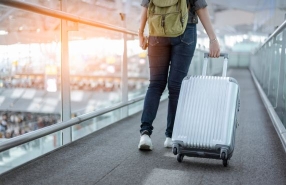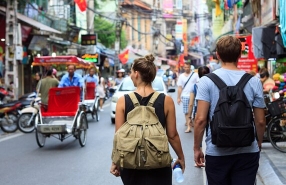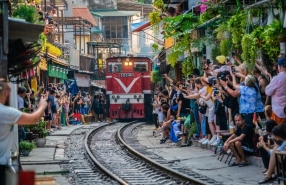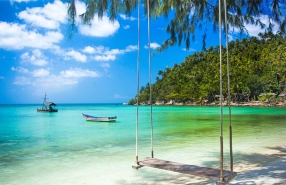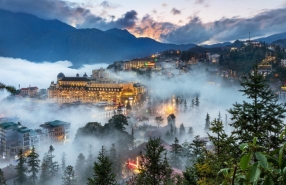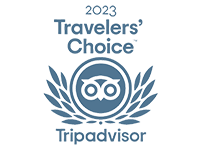How To Travel By Train In Vietnam? Essential Guide, Railway Map, Fares

Is traveling by train in Vietnam a good option? Although it's not as fast as flying or as frequent as sleeper buses, the train in Vietnam remains a popular choice for many travelers due to its comfort, safety, and the unique pleasure of admiring Vietnamese landscapes through the windows. This comprehensive guide to Vietnam railway provides useful information on the railway map, schedules, ticket booking, and the most popular routes among tourists. Let's explore it all together!
Table of Contents
I. Overview of Vietnam railways
Vietnam's railway system began operating in the early 20th century, with the Hanoi - Ho Chi Minh City line opening in 1936. After the war, despite heavy damage to the rail network, it was restored and reopened in 1976 under the name "Reunification Express", symbolizing the country's unification.
Each station and railway line represents a journey through history, stretching from the north to the south of Vietnam, attracting many travelers seeking an authentic experience.
Today, Vietnam's trains are well-equipped with air conditioning and sleeping berths. Additionally, several night trains have been introduced to help travelers save time while enjoying affordable fares.
Vietnam's railway map includes a main line connecting the north and south, along with secondary lines linking Hanoi to northern provinces and Ho Chi Minh City to southern provinces. With numerous stations across the country, train travel in Vietnam has become popular, especially for tourists with flexible schedules.
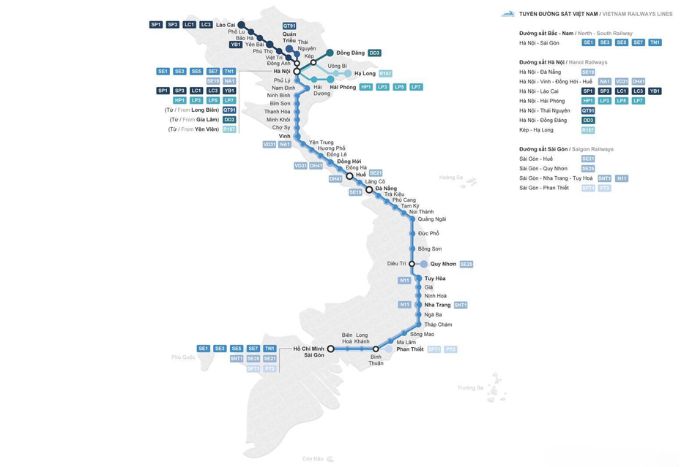
II. Why travel by train in Vietnam?
1. Unique experience: sightseeing and relaxing
Compared to high-speed trains, trains in Vietnam run relatively slowly, at about 70 km/h. This allows you to fully enjoy the scenery through the train windows. A train journey from Hanoi to Ho Chi Minh City takes over 30 hours, but it will take you through breathtaking landscapes, passing lively cities, rice fields, villages, mountains, and coastal passes. It’s an experience you’ll only find when traveling by train in Vietnam.
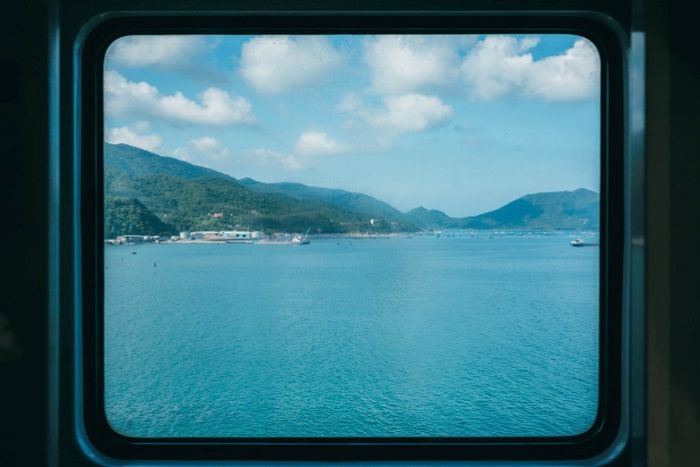
2. Convenient train schedule
Vietnam railways have fixed schedules and are less affected by weather conditions compared to air travel, helping you avoid delays during your vacation.
3. Comfortable and safe
Train cabins in Vietnam have been upgraded, becoming cleaner and more modern, with different classes available. All carriages are equipped with air conditioning, private toilets, and cabins offer options of 6, 4, or even 1 bed, allowing you to relax comfortably.
With over 113 railway stations in Vietnam, most are located in city centers, making travel more convenient than airports. Additionally, you can bring as much luggage as you like as long as it doesn’t obstruct other passengers' space.
Finally, trains are considered the safest means of transport. The journey follows a fixed track, avoiding sudden changes of direction and dangerous situations.
4. Fixed and affordable train ticket prices
Train tickets in Vietnam are cheaper than plane tickets. Plus, there are no extra fees for luggage. Another benefit is that you can bring your own meals on board, although onboard meals are not too expensive either.
5. Tourist trains with unique concepts
In addition to the trains connecting the north and south of Vietnam with basic amenities, many Vietnam tourist trains have been introduced to promote tourism, such as:
- Livitrain, King Express for Sapa with a minimalist style
- Victoria Express - night train to Sapa with typical architecture
- The Queen Express - Dalat train with European style
- SJourney - luxury train with an Indochinese style, connecting northern and southern Vietnam
- Vietage - modern train traversing Vietnam's central coast.
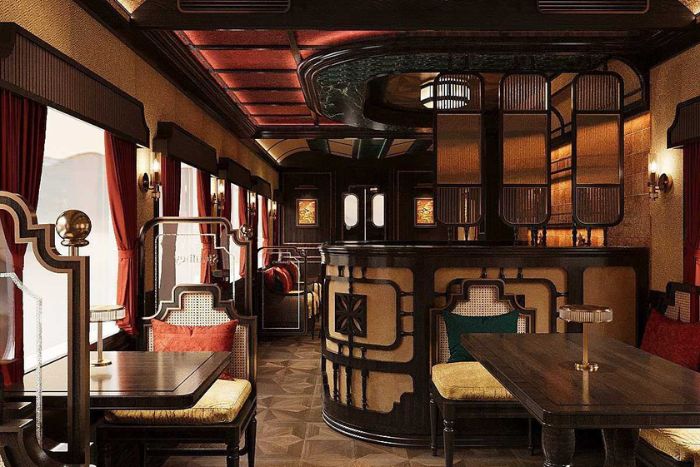
III. How to buy a train ticket?
For in-person purchases: You can go to the station, choose your destination, and buy your ticket before waiting in the lounge for the train's departure.
For online purchases: You can book directly on the official website of Vietnam Railways (dsvn.vn). Simply enter your details regarding the departure station, arrival station, one-way or round trip, as well as the desired date and time. The site will offer available seats for you to choose from, and then you can pay and receive your electronic ticket via email. On the day of departure, you just need to go to the counter to exchange your electronic ticket for a paper ticket.
IV. Best train itineraries in Vietnam for scenic views
1. Train journey from Da Nang to Hue
- Duration: 3.5 to 4 hours
- Two daily departures, morning and afternoon
The Da Nang - Hue railway takes you through the Hai Van Pass, often considered one of the most scenic rides in Vietnam. This journey offers spectacular views of majestic nature, with the Truong Son mountain range on one side and the East Sea on the other.
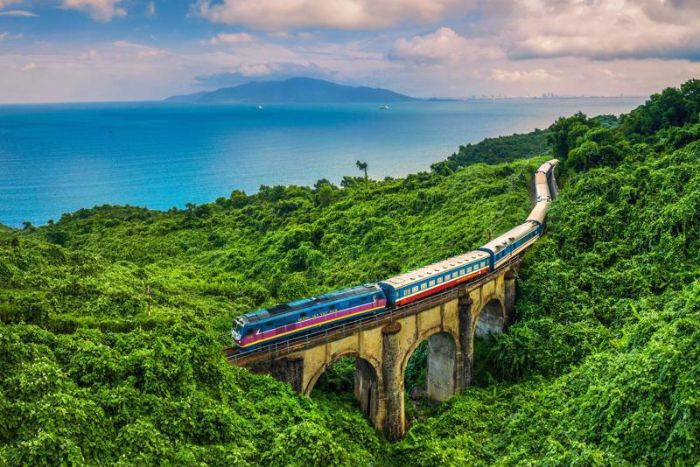
2. Tourist train from Da Lat to Trai Mat
- Duration: 1 hour
- About 5 to 7 departures per day
This Dalat tourist train, different from the main railway lines in Vietnam, offers an unforgettable experience in this region. You can enjoy tea, listen to live violin melodies, admire flower fields, and soak in the elegant atmosphere reminiscent of the aristocratic journeys of the past.
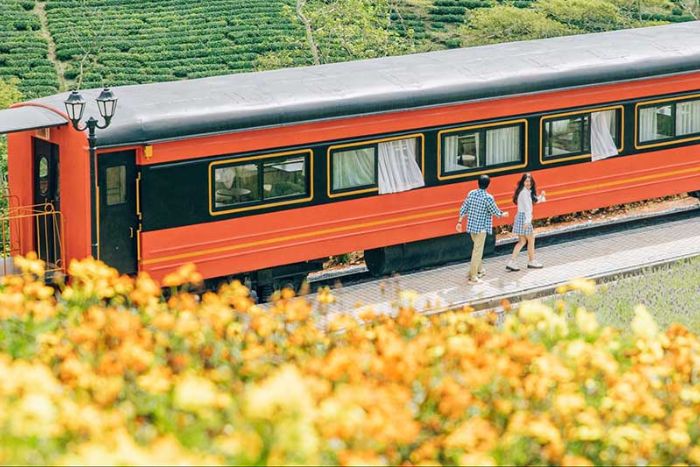
3. Climbing train from Sa Pa to Fansipan
- Duration: 6 minutes for a distance of 2 km
- Service from 8 AM to 3 PM
This tourist train in Sapa, the Muong Hoa funicular, offers a unique exploration of the grand landscapes of Northwest Vietnam. The train climbs along the mountains, providing impressive views of the surrounding peaks and the illusion of floating amidst the clouds.
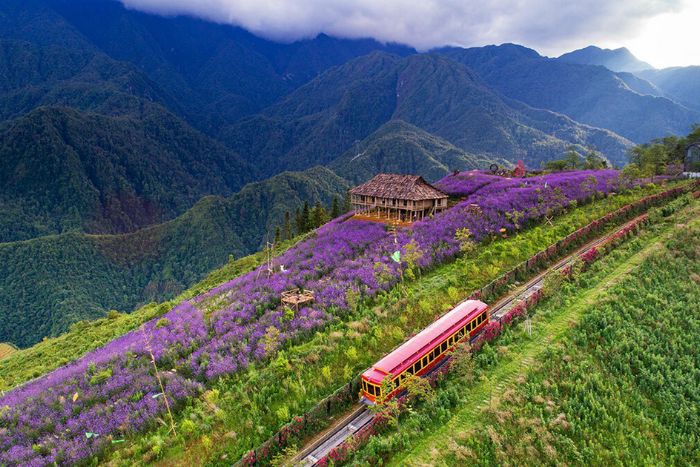
4. Train itinerary from Ho Chi Minh city to Binh Thuan
- Duration: 4 hours
- About 7 departures per day
On the 200 km journey, the train from Ho Chi Minh City to Binh Thuan passes through lush dragon fruit orchards and vast wind farm fields. In good weather, you can even glimpse the blue sea on the horizon.
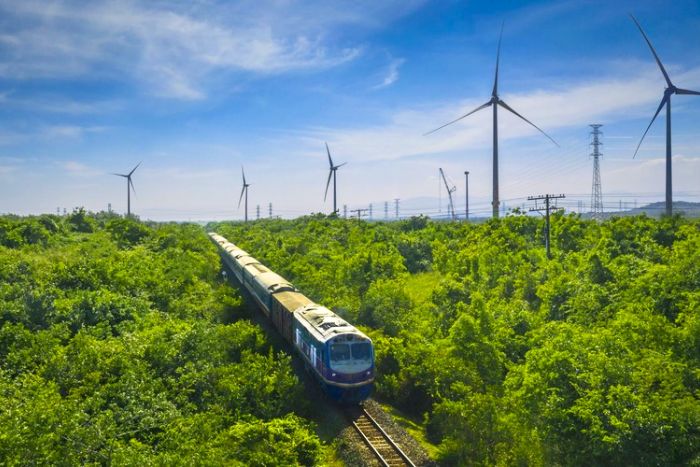
V. Recommended night train journey in Vietnam
1. Sleeper train from Hanoi to Sapa
- Duration: 8 hours from Hanoi
The Sapa night trains usually depart between 9 PM and 10 PM from Hanoi and arrive in Sapa around 6 AM. After a night's sleep, you'll wake up in the charming, misty town of Sapa. This option is very popular among travelers.
2. Overnight train from Hanoi to Hue
- Duration: 12 hours from Hanoi
This Hanoi to Hue train offers an excellent opportunity to explore central Vietnam. There are 6 daily departures. If you travel during the day, you can enjoy the scenery, but to save time, you can take a sleeper train that leaves Hanoi at 7 PM and arrives in Hue at 8 AM the next morning.
3. Night train from Ho Chi Minh City to Da Nang
- Duration: 16 hours from Ho Chi Minh City
If you are in southern Vietnam, you can take a night train to Da Nang from Ho Chi Minh City. With 6 daily departures, the trains starting from 2 PM will allow you to enjoy the sunset on board, and you’ll arrive in Da Nang at 10 AM the next morning.
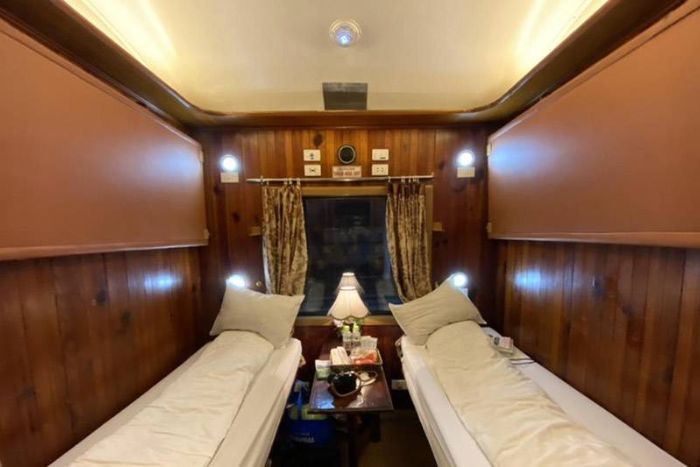
We hope this Vietnam railway travel guide has provided useful information to world travelers. Traveling by train in Vietnam will be a unique experience, taking you through fascinating railways and breathtaking landscapes. So are you ready? Pack your bags now and embark on this unforgettable adventure!
Tips when traveling by train in Vietnam:
- It's important to book tickets in advance, especially during peak and holiday seasons (Tet, New Year), to secure your seat.
- Arrive early at the station to avoid any last-minute rush.
- Pack snacks and water, as food options on trains may be limited.
- For long journeys, consider bringing a neck pillow and blanket for extra comfort.
- If you're on a sleeper train, lock your luggage securely. Keep your valuables close and be cautious of pickpockets.
- Lastly, enjoy the scenic views from the window, as train travel offers a unique perspective of Vietnam’s landscapes.
Trains pass through Hanoi Train Street several times a day, with the most popular times for visitors being in the morning and late afternoon.
- From Monday to Friday: Morning train at 8.50am, 9.20 am, 11.40 am / Noon and evening at 3.20 pm, 5.30, 6h20, 9.20 pm, 10 pm
- Special on Saturday, Sunday & holidays: more trains at 5.30 pm - 6.20 pm
The street is bustling as tourists and locals clear the tracks just before the train arrives, creating a unique and thrilling experience.
Remember to stay safe and respect local regulations when visiting this narrow and iconic street in Hanoi.
Related travel guide
Other similar articles
CUSTOMIZABLE BY LOCAL EXPERTS
Personalized trip at the original price!
REFUND GUARANTEE
We believe in our work and promise to give you money back.
GOOD PRICE / QUALITY
95% satisfied more than expected!
24/7 LOCAL SUPPORT
We are always available online to provide assistance at any time.
Most read articles
Autour Asia is highly recommended on
Embracing the mission of "Satisfied more than expected" and providing authentic experiences, we have received numerous recommendations on reputable travel forums:












